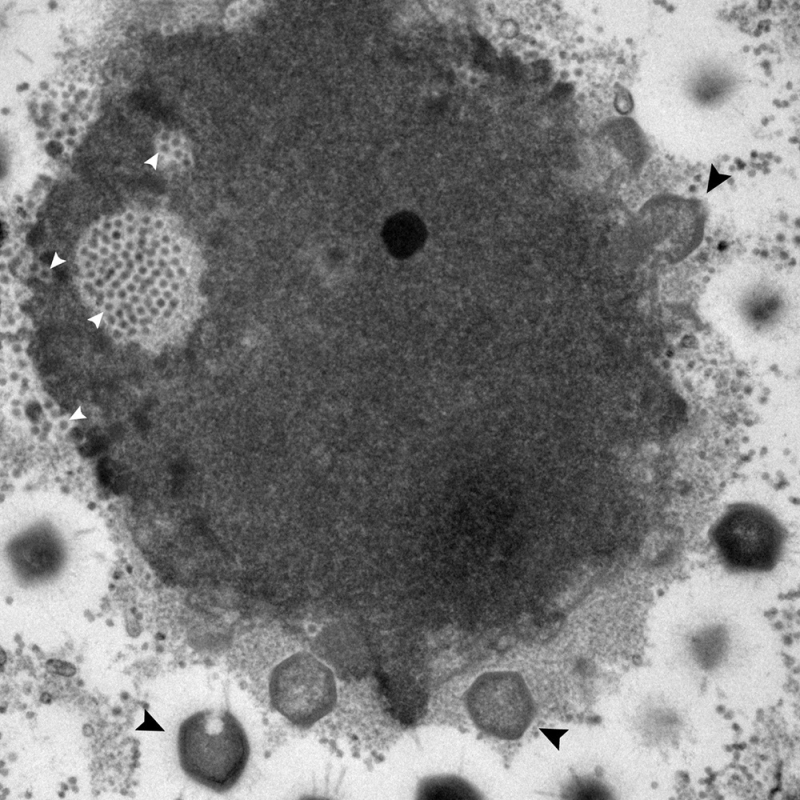Giant viruses infecting amoebae, single-celled eukaryotic organisms, can be parasitized by other viruses, virophages, as well as mobile genetic elements called transpovirons and contained in both categories of viruses.
In a study published in Nature Communicationsscientists deciphered the interactions within this complex quadripartite system by analyzing the expression of their respective genes.
Virophages, viruses of viruses…
Viruses are often considered the ultimate parasites. However, certain giant viruses infecting unicellular eukaryotes can themselves be parasitized by smaller viruses, virophages.
The latter use the viral factory, a transient organelle formed by the giant virus in the cytoplasm of the infected cell, to ensure their own replication.
This phenomenon constitutes a case of hyperparasitism, where a parasite is itself parasitized. In addition, certain giant viruses and virophages carry DNA molecules in their particles in the form of episomes called transpovirons. This system thus forms a network of complex interactions, involving a host cell, a giant virus, a virophage and a transpoviron.
Controlled infection experiments to understand underlying mechanisms
How is the gene expression of each partner regulated during infection, and how is this regulation modified by the presence of the others? To answer these questions, the scientists carried out a series of infection experiments by successively introducing the different actors.
They first studied infection of the amoebic host Acanthamoeba castellanii by the giant virus megavirus chilensis. They then carried out co-infections with the virophage zamilon vitis, the transpoviron mvtv, and both at the same time. The transcriptome, that is to say all the messenger RNAs, of each partner was analyzed by sequencing, making it possible to follow the evolution of gene expression during the infectious cycle.
A fascinating theater of nested parasites
These analyses, published in the journal Nature Communicationsrevealed that infection by the giant virus induces a profound alteration of the transcriptome of the host cell, affecting almost half of its genes. Although the majority are repressed, some are instead activated, allowing the virus to remodel cellular metabolism to promote its own replication.
Virophage co-infection significantly alters the expression of more than a quarter of the giant virus genes, with most being repressed, suggesting that the two viruses compete for transcription machinery. This effect is, however, transient, with no significant impact on the final production of particles of the giant virus.

Electron microscopy image of an Acanthameoba castellanii cell co-infected with the giant virus megavirus chilensis and the virophage zamilon vitis.
In the center of the image, in dark gray, we can see the viral factory, a structure present in the cytoplasm of the cell where viral replication and the production of new giant virus particles (black arrows) and virophages ( white arrows).
© Lionel Bertaux, Sandra Jeudy and Matthieu Legendre
This study also reveals that the presence of the virophage induces the overexpression of transcription factors encoded in the genome of the giant virus. This is where the last partner, transpoviron, comes in. It would exploit these modifications to overexpress its own genes.
This quadripartite system illustrates the complexity of interactions between viruses, hosts and mobile genetic elements. The amoeba, host of these viruses, being itself an opportunistic pathogen, we are confronted with a fascinating theater of nested parasites.
References:
Complex transcriptional regulations of a hyperparasitic quadripartite system in giant viruses infecting protists.
Bessenay A, Bisio H, Belmudes L, Couté Y, Bertaux L, Claverie JM, Abergel C, Jeudy S, Legendre M.
Nature Communications. October 9, 2024. DOI: 10.1038/s41467-024-52906-1.

